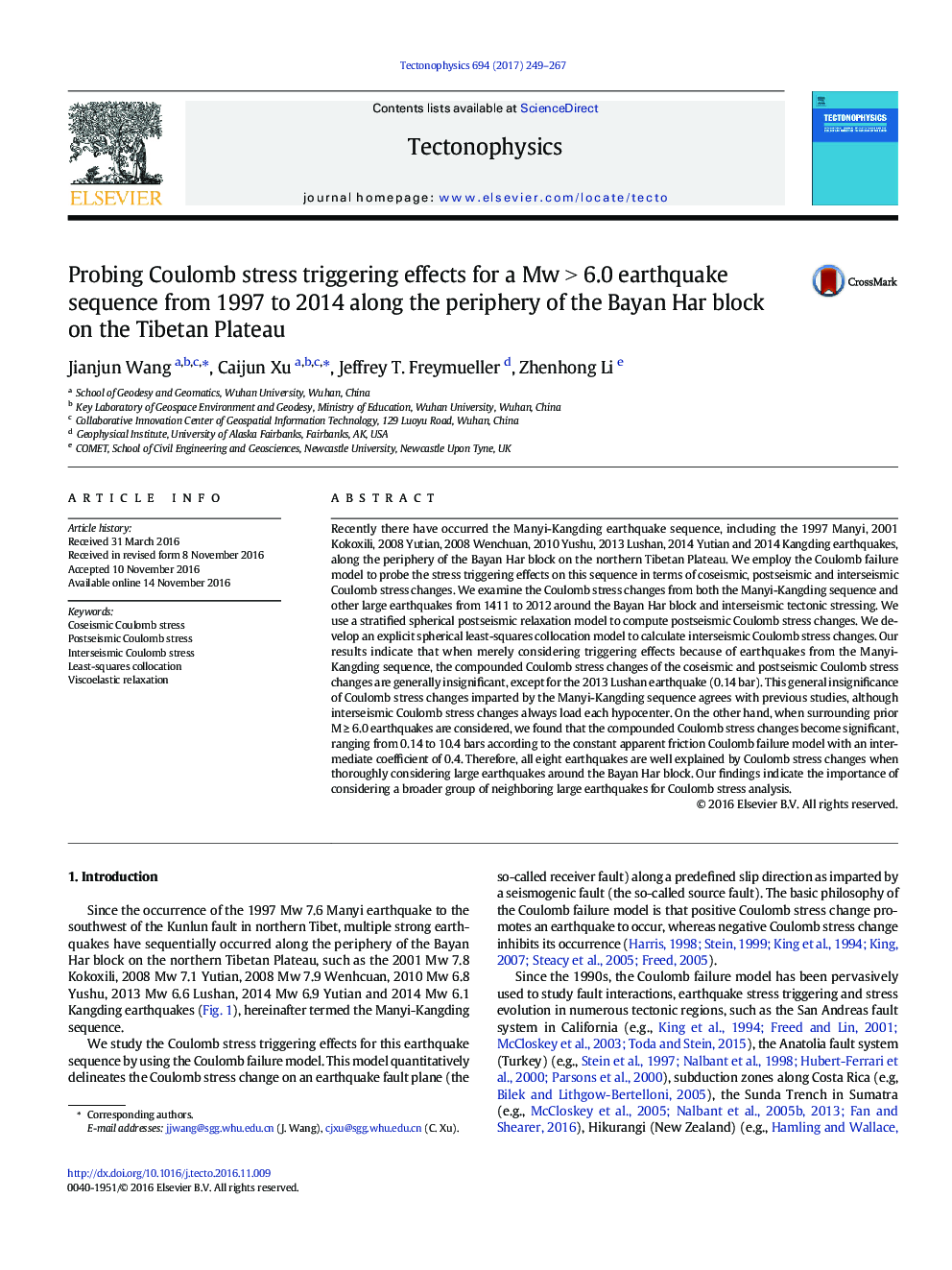| کد مقاله | کد نشریه | سال انتشار | مقاله انگلیسی | نسخه تمام متن |
|---|---|---|---|---|
| 5781713 | 1636707 | 2017 | 19 صفحه PDF | دانلود رایگان |
عنوان انگلیسی مقاله ISI
Probing Coulomb stress triggering effects for a Mw > 6.0 earthquake sequence from 1997 to 2014 along the periphery of the Bayan Har block on the Tibetan Plateau
دانلود مقاله + سفارش ترجمه
دانلود مقاله ISI انگلیسی
رایگان برای ایرانیان
کلمات کلیدی
موضوعات مرتبط
مهندسی و علوم پایه
علوم زمین و سیارات
فرآیندهای سطح زمین
پیش نمایش صفحه اول مقاله

چکیده انگلیسی
Recently there have occurred the Manyi-Kangding earthquake sequence, including the 1997 Manyi, 2001 Kokoxili, 2008 Yutian, 2008 Wenchuan, 2010 Yushu, 2013 Lushan, 2014 Yutian and 2014 Kangding earthquakes, along the periphery of the Bayan Har block on the northern Tibetan Plateau. We employ the Coulomb failure model to probe the stress triggering effects on this sequence in terms of coseismic, postseismic and interseismic Coulomb stress changes. We examine the Coulomb stress changes from both the Manyi-Kangding sequence and other large earthquakes from 1411 to 2012 around the Bayan Har block and interseismic tectonic stressing. We use a stratified spherical postseismic relaxation model to compute postseismic Coulomb stress changes. We develop an explicit spherical least-squares collocation model to calculate interseismic Coulomb stress changes. Our results indicate that when merely considering triggering effects because of earthquakes from the Manyi-Kangding sequence, the compounded Coulomb stress changes of the coseismic and postseismic Coulomb stress changes are generally insignificant, except for the 2013 Lushan earthquake (0.14 bar). This general insignificance of Coulomb stress changes imparted by the Manyi-Kangding sequence agrees with previous studies, although interseismic Coulomb stress changes always load each hypocenter. On the other hand, when surrounding prior M â¥Â 6.0 earthquakes are considered, we found that the compounded Coulomb stress changes become significant, ranging from 0.14 to 10.4 bars according to the constant apparent friction Coulomb failure model with an intermediate coefficient of 0.4. Therefore, all eight earthquakes are well explained by Coulomb stress changes when thoroughly considering large earthquakes around the Bayan Har block. Our findings indicate the importance of considering a broader group of neighboring large earthquakes for Coulomb stress analysis.
ناشر
Database: Elsevier - ScienceDirect (ساینس دایرکت)
Journal: Tectonophysics - Volume 694, 2 January 2017, Pages 249-267
Journal: Tectonophysics - Volume 694, 2 January 2017, Pages 249-267
نویسندگان
Jianjun Wang, Caijun Xu, Jeffrey T. Freymueller, Zhenhong Li,